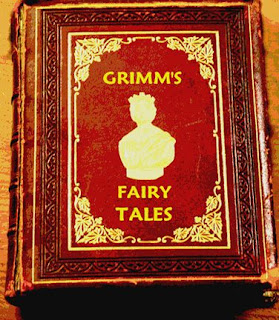I’ve recently started taking an online course on fantasy
literature (which is really good, and also free—you can join it here), and our
first assignment is to read the Grimm fairytales, and talk about certain
interpretations thereof.
For me, it’s a bit of fun, because the version we’re reading
is lovely, with gorgeous illustrations, and the stories are familiar, but not
wholly known to me. I don’t usually read through fairy tale books for a lark,
so I’ve not seen any of this stuff for a while.
And in reading the book, I’ve come to a single conclusion:
there are a crap ton of princesses in this book.
Like, a disproportionate amount. If even half the stories in
here were based on real events, then either we would have to conclude that no
one in medieval Europe was out of the bounds of a story like this, or that the
world spun off into some nether dimension where the time of kings and queens
spun out for an extra century or so.
But here’s the thing: there are a lot of princes too.
So this got me thinking. Not about whether or not the
stories are true, because, seriously? But instead, I started thinking about why
a good three quarters of the stories were about low-born peasants tricking
their way into the royal bedroom. And the conclusion I came to was simple:
prostitution.
Puts a whole new spin on it doesn’t it?
Now, I’m not saying this as some rabid, foam at the mouth,
man-hater. What I mean is that in these fairy tales, whenever the young man
tricks his way to the princess’s hand, or the fair maiden is discovered and
married by the king, it’s not just about romance (in fact, it’s not really
about romance at all), but also about money. Cold hard cash. Or, in this case,
gold.
When you come down to it, life in medieval Europe was hard.
Not as hard as some have led us to believe, of course, with the whole “Dark
Ages” myth (check out this John Green video if you don’t believe me), but still
pretty difficult. Europe was a cold place, making agriculture a tiresome
business. Famines happened, plagues ran through, and sometimes trade from
foreign parts of the world devalued the local economy, or, worse, created an
inflationary bubble that destroyed cities when it burst (as in Amsterdam and
the Dutch Tulip Disaster).
It was not a good time to be poor.
Moreover, it’s never a good time to be poor. Since the
concept of money came about (which was not, as you might think, immediate),
poverty has implied a lack, and a division between the haves and the have nots.
Well, Grimm’s Fairy
Tales were written with a specific audience in mind: the have nots.
Stories about the virtues of cleverness, the importance of
hard work, and the ways to work your way into a royal wedding weren’t about little
girls and princess fantasies, they were about stabilizing your economic
reality. It’s more accurate to think of these marriages as transactions than
romances, because in most cases the bride and groom were state unseen. All the
have not knew of the royal was that they were rich, and hopefully attractive.
That was enough.
So, yes, when it comes down to it. These are stories of
prostitution. The bargain of human beings for goods and services. But in the
end, it’s not all that bad. Romance wasn’t valued then like it is today. In
fact, it was considered largely anomalous. Your job, as a representative of
your family, was to marry well enough to better their fortunes. It wasn’t a
cruel and money-grubbing thing to do; it was an economic reality.
It’s only in the past hundred years or so that we’ve become
rich enough (and I here refer to North America and Europe mainly, because the
practice of economic marriage is still held in many places) that we can and do
marry for love. So we think that it is the best of all fates.
And we’ve changed the fairy tales so that Cinderella falls
in love with the Prince, instead of figuring, “Hey, he’s a prince. Might as
well put on some tights and try to dance my way into his bed, because that way
I’ll get dinner tomorrow.”
It’s also funny that in the past fifty years or so,
feminists have come out against fairy tales, calling them passive, and
insisting that women can rescue themselves.
Here is the part they’re missing: in most of these fairy
tales, the women are rescuing themselves.
Rescuing themselves from lives of drudgery, disease, and hunger. So what if
they do it with a pretty face or sharp wits instead of a sword? There is more
than one way to be strong.
Disney may have tried to sell us on the idea of the sweet,
passive princess, and by all means you can revolt against her, but if you look
back far enough, you’ll see that sometimes marrying the prince is a
revolutionary act in and of itself.
 |
| Incidentally, Alice in Wonderland is not a fairy tale. Stop trying to make that happen, world. |





No comments:
Post a Comment